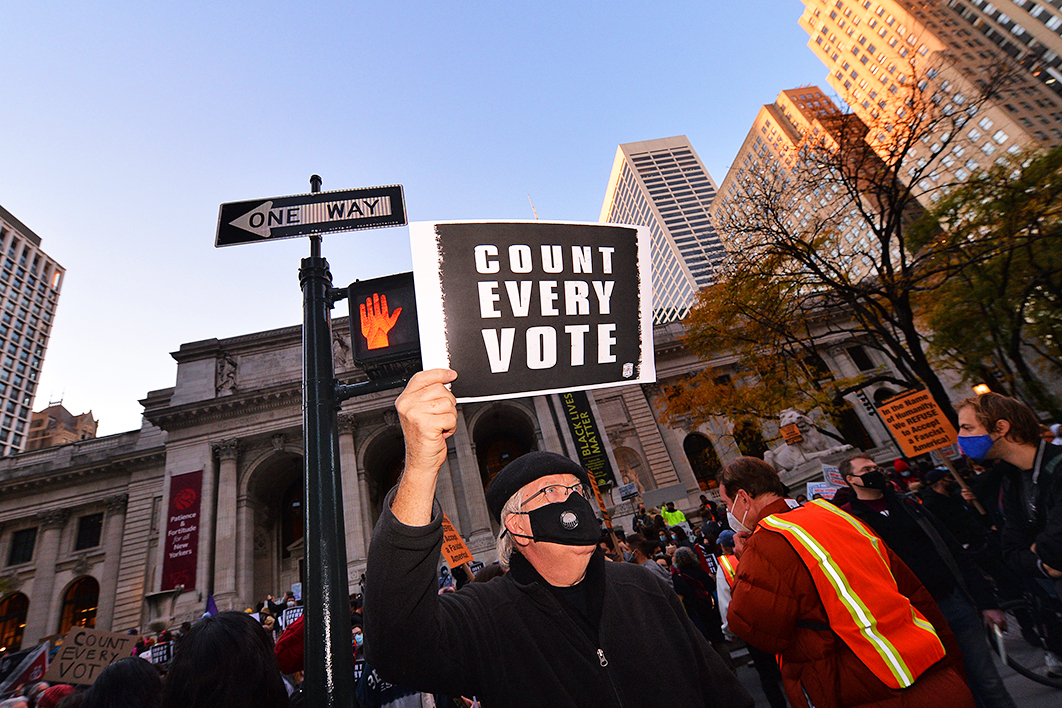Malcolm Turnbull’s government was narrowly re-elected in July 2016 with seventy-six out of 150 lower house seats. Labor netted sixty-nine and the crossbench numbered five. But on election night, right up until when Australian Electoral Commission staff went to bed, it looked quite a lot worse for the government. With a hung parliament looking likely, the repercussions were immediate. Calls for Turnbull’s head came from inside the Coalition and among its supporters. His authority never recovered.
It was certainly a poorer result than most expected, but we can imagine if the order of counting had made it look the opposite: an apparently comfortable seventy-nine-seat haul on the night that enabled the prime minister to claim victory but was eventually whittled down to seventy-six. A different narrative arc with different real-life consequences.
It happened because of a large number of postal and pre-poll votes, which favour the Coalition. The proportion of voters availing themselves of early voting leaps at each poll; because the makeup of these electors is unknowable, it isn’t possible to accurately anticipate and tweak numbers to make allowances. (So far, in 2016 and 2019, early voters have remained surprisingly strongly pro-Coalition; you’d expect the advantage to dilute as the numbers grow.)
Anyone who vaguely followed this year’s US presidential election campaign would have been aware that most Americans had already voted by 3 November, and the early voters very heavily slanted towards the Democrats. So we all knew that the votes counted first, which in most states were election day ones, would favour Donald Trump more than the votes counted later. And there was a strong suspicion (not least because it was told to Axios by White House insiders) that if Trump were ahead in the election day count he would claim victory and delegitimise further updates of the numbers as fraud.
That’s exactly what happened. But when the counting is over, Joe Biden will probably have a 4 to 5 per cent lead in the national vote, and an electoral college haul in the low 300s (out of 538) — similar to, say, the 2012 result that brought Barack Obama’s re-election. But it will have happened by what seems a tortuous path, because of the order the votes are counted.
Some are still making much about this “close” result, but that should subside once the actual numbers are tallied. Meanwhile, there are short-term real-life risks from Trump supporters who sincerely believe that they and he have been robbed, though that would have happened to some extent regardless.
Yet the polls foretold a much more one-sided outcome. They certainly failed in that sense, but were they so bad in historical terms?
In aggregate, they seem to have overstated Biden’s position relative to Trump by about four points, both nationally and in the important states. That’s worse than last week’s Queensland election, when the final Newspoll showed a one-point primary vote lead for Labor and the voters delivered (on current numbers) one of 3.8 per cent. (The estimated two-party-preferred gap seemed to have missed by a bit more, between 3 and 4 per cent.)
The polls at our last federal election failed by a comparable magnitude to America 2020, as did those for Brexit in 2016 and for Trump’s election the same year. And they were out by even more at the last Victorian election in 2018, underestimating the Labor lead by at least 6 per cent. But they picked the right side.
America is a bit different. It has so many polls, dozens and dozens of them, nationally and in vaguely contestable states, and that should make for more accuracy overall.
Still, at Barack Obama’s re-election in 2012, the polls were out by three or four points. But they too understated the size of his re-election and so largely emerged unexamined.
Was there ever a golden age of accurate opinion polls? Our most looked-at pollster, Newspoll, has been in the field since 1985. At its first two federal elections, in 1987 and 1990, its primary vote results (which is what it measures and, back then, was all it published) were absolute shockers, saved only by the fact that the party it (wrongly) had ahead in primary votes (Labor) ended up with a majority of seats thanks to preferences. In 1987 the election eve Newspoll gave the Hawke Labor government a primary vote lead of 5.5 per cent; the result was a 0.8 per cent lead for the Coalition. In 1990 a 2 per cent Labor lead in the final survey contrasted with a 4.1 per cent deficit at the ballot box. So Newspoll was out by over 6 per cent both times.
It got better, but there’s a fair bit of hit and miss in the record. Our preferential system tends to smooth out mistakes and volatility: if the Greens are overestimated at Labor’s expense, or vice versa, it mostly comes out in the two-party-preferred wash. Similar with the Coalition and One Nation or a Clive Palmer party.
Three decades ago it was a challenge for pollsters to allow for those 5 per cent of people without landlines. Now the challenges are more immense, and the polling methods more sophisticated, cheaper, and more reliant on weighting.
One factor in the 2020 American election is that with the majority voting before election day, the “late swing” thesis can’t work. Pollsters were asking those many early voters to say whom they had already voted for. •





